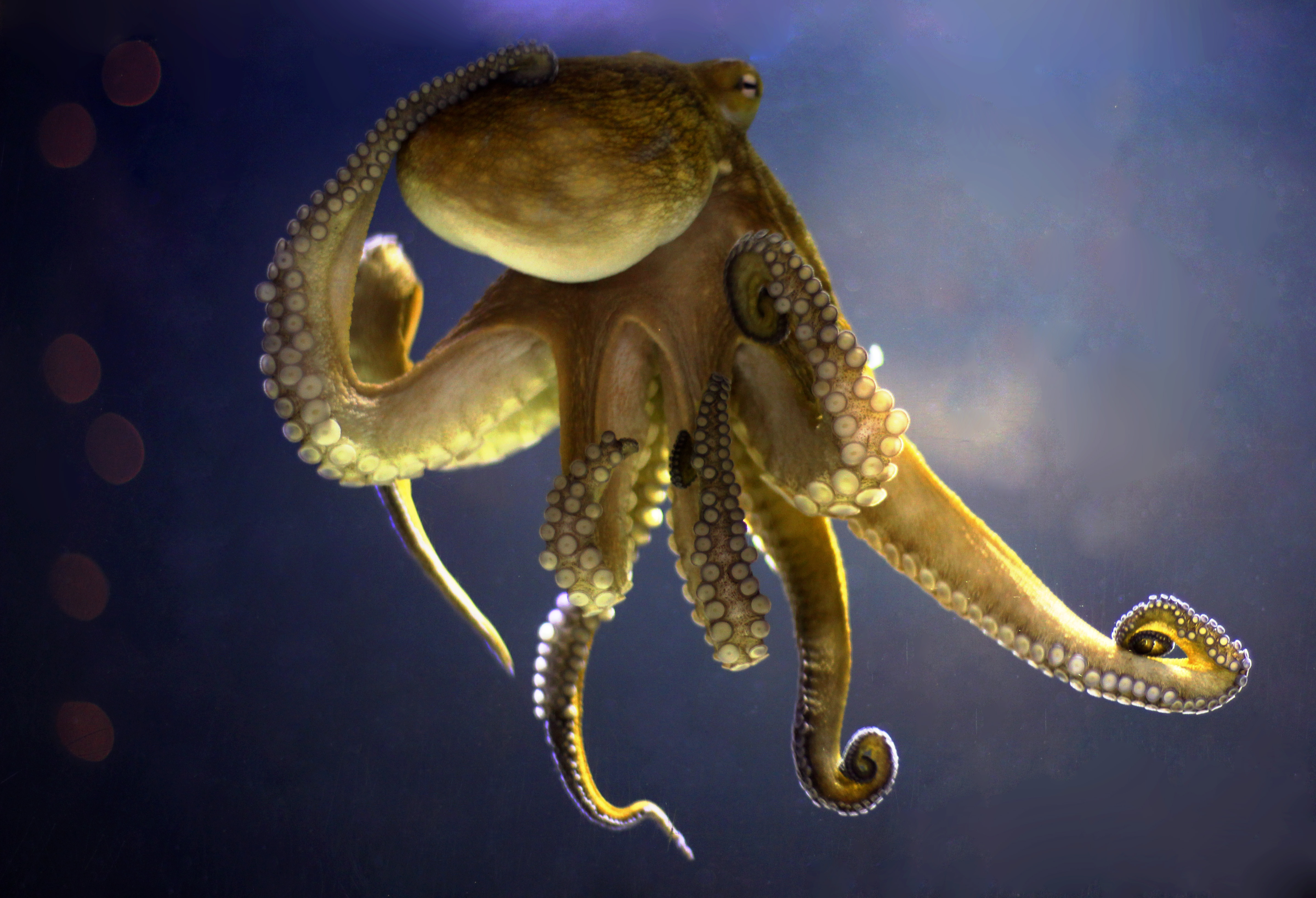An interdisciplinary team of linguists, biologists and animal researchers at the University of Southern California is looking into the movement of octopus tentacles to illuminate how the human tongue moves.
Both the tongue and tentacles are part of a class of biological structures known as “hydrostats.” A muscular hydrostat is a part of an organism that is made of muscle and contains no hard structures (bones or cartilage). It moves by squeezing and stretching muscles against one another, rather than muscles being moved by bone. An elephant’s trunk is also classified as a muscular hydrostat. Whole organisms can also be hydrostats, such as the worm C. elegans, which the researchers also study as part of an NSF grant to investigate animal movement. The research team hopes that this research can provide insight into principles of movement across hydrostats, and that it may even have implications for research into muscular diseases like Parkinson’s.
Muscular hydrostats have more “degrees of freedom” than muscular structures that use bones to move them. This means that they are more flexible and move more freely, compared to, say, an arm, which can only move at the joints located at the shoulder, elbow, wrist and hands. This has important implications for speech, which requires many complex movements to form the different sounds of language; some distinct sounds in English, for instance, differ from one another by millimeters.
Iskarous and his team are interested in these degrees of freedom. “Octopus arms are capable of very non-rigid movements,” he says, “but they can also make their own rigidity, make their own joints, and can even walk on those joints.” Octopodes have increasingly become a topic of study among biologists; a recent discovery has found several expanded gene families in the octopus’s genome. However, the octopus is only recently a topic of study for linguists.
Tongues, too, can be either very flexible or rigid. In sounds like the “t” sound in English, the tongue back becomes rigid, and moves forward to make contact with the alveolar ridge, the bony ridge located behind the front teeth. The octopus uses similar principles of movement in its behavior in the wild according to Mairym Llorens Monteserin, a PhD student working with Iskarous. “Octopus have a really beautiful slapping motor pattern,” she said. When a fish threatens to enter the octopus’s den, the octopus pairs two of its tentacles together to form two “arms”, and holds them out in front of itself in a put-’em-up pose before deftly smacking the fish out of the way — employing the same rigidity that the tongue uses in saying “t” sounds.
Other sounds, though, require the tongue’s complex muscular movements and cannot be done with rigid muscle movement. For the English sound “l”, as in “bell”, the tongue must stretch to hit the alveolar ridge with the tongue tip and the soft palate with the tongue back, creating a sort of saddle shape if viewed from the side of the head; this stretching also makes the tongue narrower, allowing air to move around the sides of the tongue, which linguists consider to be a defining characteristic of the sound “l”. This sound requires hydrostatic movement in the tongue.


